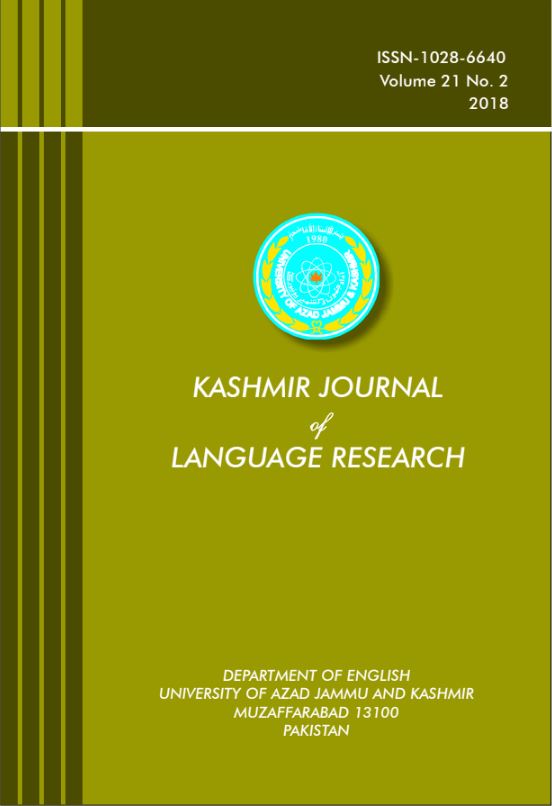Investigating Gender, L1 and Voice Onset Time based variations in Urdu aspirated voiceless and voiced plosives
An Acoustic analysis
Keywords:
Gender variation; L1 variation; VOT; Urdu plosives; AspirationAbstract
This article explores the feature of aspiration in Urdu voiceless and voiced plosives /ph, bh, th, dh, kh, gh/ from the perspective of three variables i.e., gender, L1 and VOT. It attempts to investigate which of these variables has a significant impact in the production of bilabial, alveolar and velar Urdu plosives. A wordlist of 60 tokens was used as stimuli which carried 10 instances from each category of plosives. 30 post-graduate male and female students, from Punjabi, Seraiki and Urdu L1 aged between 20 and 25, were selected as participants of the study. The recordings were analyzed to measure VOT of hold phase of plosives using PRAAT. The independent t-test and ANOVA were applied to probe into significance of each variable. Findings revealed that belonging to different L1 backgrounds did not have significant differences as the mean values were almost the similar and p>.05 for each category except for Punjabi speakers in /bh/. For gender variable, significant variation was found in /ph, bh, dh, kh, gh./. The most significant variable was VOT where p<.01 in each plosive category with huge differences in the high mean VOTs for voiceless plosives /ph, th, kh/ and very low mean VOTs for voiced plosives / bh, dh, gh/. It also implied that voicing impeded the hold phase of aspirated voiced plosives resulting in huge VOT differences; although a tendency of rising VOT from alveolar to bilabial and then to velar was found between voiceless and voiced plosives.

Downloads
Published
Issue
Section
License
Copyright (c) 2021 Kashmir Journal of Language Research

This work is licensed under a Creative Commons Attribution 4.0 International License.




